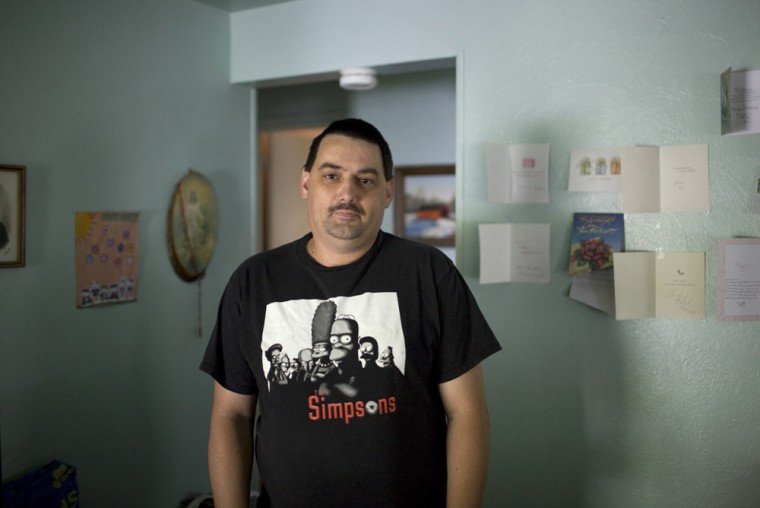Karen Inbody has just about three weeks to figure out Plan B.
The 58-year-old divorcee has been getting by on unemployment compensation since her layoff in early 2008, but she’s nearly reached the end of her benefits.
And even though she's applied for dozens of jobs, the former rental property manager has come up empty.
“I’d shovel horse poop,” she says wearily. “I haven’t even found one of those jobs available.”
Now, like many others whose unemployment benefits are running out, the Elkhart, Ind., native doesn’t know how she’s going to put food on her table and pay her mortgage.
Coming tsunami
Despite repeated extensions of the unemployment compensation program — up to a record 79 weeks in many states, compared to the standard 26 weeks in normal times — some 1.5 million people are expected to exhaust their benefits by year’s end.
In the first big wave, some 540,000 are expected to fall out of the program by the end of September, according to the nonprofit National Employment Law Project.
“Every state is going to experience a substantial increase in people exhausting their benefits,” says Chris Owen, executive director of the Washington, D.C.-based worker advocacy group. “That means more people who will not be able to pay their mortgages, and who will not be able to shop and buy things. It will be a blow for the national economy, and for state and local economies.”
For many in this situation, there are few obvious places to turn. Short of qualifying for another government program, most rely on family and friends, and draw on the help of churches and nonprofits that run food pantries and assist with other emergency needs.
Mowing for gas money
Elkhart resident Tim White, who was laid off from a $10 per hour job at a laminates factory last year, saw his final unemployment check in mid-July.

Now the 42-year-old father earns $25 a week mowing a friend’s lawn — enough to cover gas for his '97 Jeep Cherokee so he can drive around to look for jobs. He says he applies anywhere they are accepting applications – McDonald’s, Jiffy Lube, KFC, or Goodwill — to name just a few.
"I don't care if it's a minimum wage job,” he says. “It's better than nothing.”
For lodging, White and his wife, Prima, and their 13-year-old daughter, Kelly, have been getting by with the help of a relative who lets them live rent-free. The family also started receiving food stamps worth about $300 a month in August.
White’s wife is in poor health and takes medications for high blood pressure, diabetes and other problems. He is tormented by the prospect she could have a medical emergency with no health insurance.
"Health care coverage we worry about every day," he said.
Food pantry
Dean Preheim-Bartel, executive director of Church Community Services, which operates one of the larger food pantries in Elkhart, says he’s been seeing more and more people who have exhausted their unemployment benefits. It is one of the reasons, he believes, that in July, a record 345 new clients showed up to get free provisions for their families, compared to 179 new clients in July last year ago.
“There are a lot of people who are first timers who will readily acknowledge they have never been to a place like this -- never been to a food pantry of any kind,” he says.
Once laid-off workers exhaust their unemployment benefits, other sources of government assistance are relatively scant. TANF, Temporary Assistance for Needy Families, is available to very low-income or unemployed people with children. But the requirements are far stricter than those for unemployment compensation.
(Discuss: Laid-off workers eye the abyss)
“You have to have very low wealth to get TANF benefits. So it’s not practical thing for most middle-class families,” says Gary Burtless, an economist at the Brookings Institution.
Childless people have even fewer options.
“If you have no kids, then you’re at the tender mercy of whatever state program there is,” says Burtless. “In a lot of places, it’s just not very much money, and they can deny people benefits for a lot of reasons.”
Likewise, food stamps are generally available only to the poorest of the poor.
Handywoman
Becky Cutter, who lives in rural Elkhart County, received her final unemployment payout on June 28. She was laid off in February 2008 from her job at Stallion Coach, a small company in nearby Bristol that converts horse trailers into living quarters.

Her unemployment checks were modest — an average of $182.50 a week after taxes — but they kept her afloat for 15 months while she looked for a new job. She says she applied for dozens of positions in customer service, restaurant management, waiting tables, even as a speedway manager — and was amazed when nothing panned out.
Now, she tries to maintain a can-do spirit and accepts whatever small jobs come her way.
“Basically, I’ve turned into a handywoman,” she says, picking up $25 here and $100 there doing everything from painting and cleaning rain gutters to dog grooming. “I’ve been amazed at the things I can do. I’ve learned to drive a scissor lift and got over my fear of heights.”
Cutter is fortunate that her landlord has agreed to let her remain in the farm house where she lives, doing maintenance instead of paying rent. She still has a horse that she says she’ll have to sell to raise a little cash.
In the meantime, it’s a shoestring existence as she continues to send out resumes. Trips to the food pantry and gifts from friends and neighbors have helped fill the gaps.
Positive signs, but few jobs
Despite some recent signs that the unemployment situation is improving, the odds of actually getting a new job are grim.
Federal statistics indicate that there were more than five times as many people seeking jobs in the United States in June as there were positions available. In especially hard-hit areas like Elkhart, where the unemployment rate is 16.7 percent — compared to 9.4 percent nationwide — the odds against job seekers are even tougher.
Vicki McGlinsey, who was laid off last year from a printing company that served the RV industry, says she was one of 10 people who made the final round of interviews for a security position offered at Wal-Mart in July. The manager who broke the news that she wouldn’t get the job told her they received more than 250 applications.
“I myself have put in about 100 applications and résumés since February … and have had three interview opportunities, including this one,” she says. “It boggles my mind when I hear people say we just need to try harder.”
To aid people like McGlinsey, political pressure is building for the passage of yet another extension of unemployment benefits, at least for the jobless in states hardest hit by the recession.
In early August, just before Congress left for a break, Rep. Jim McDermott, D-Wash., introduced a bill that would provide another 13 weeks of federally funded unemployment benefits to workers in states with a three-month jobless rate over 9.5 percent — likely encompassing about 20 states.
The bill is expected to be taken up when Congress returns after Labor Day.
Opponents of an extension argue that increasing the benefit duration will simply prolong unemployment, allowing workers to get “rusty,” possibly unemployable. Those in favor maintain that the help is essential to these individuals until the employment picture improves and that the jobless funds help stimulate the economy.
Weighing options
With the clock running out on her benefits, Karen Inbody is weighing her options.
She’s already borrowed some money from her family, and does not want to ask for more — two of her sons are receiving unemployment benefits after being laid-off from the RV industry, and two are working reduced hours.
Inbody owes $600 a month on her house, a simple gray bungalow on Elkhart’s historic Bank Street. She fears that without some new source of income, she will lose it.
“Sell my house, rent out my house?” she says, running through some scenarios. She adds wryly: “I could stand on a street corner, but those are all taken too.”
